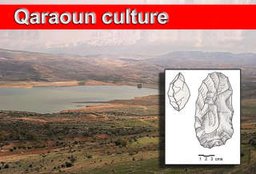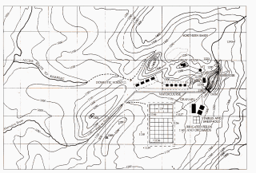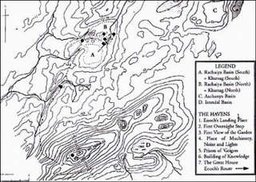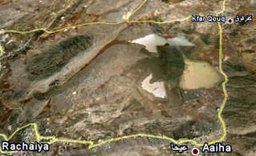Hursag

Hursag
Hursag (𒉺𒂅 ḪUR.SAĜ) is a Sumerian term variously translated as meaning "mountain", "hill", "foothills" or "piedmont". Thorkild Jacobsen extrapolated the translation in his later career to mean literally, "head of the valleys". The word was originally transliterated as Kharsag by early scholars such as George Aaron Barton in Miscellaneous Babylonian Inscriptions but has changed to Hursag over time with more modern scholarship. [10] It was translated by Christian O'Brien to mean "head garden" or "head enclosure".[7]
Mountains play a certain role in Mesopotamian mythology and Assyro-Babylonian religion, associated with deities such as Anu, Enlil, Enki and Ninhursag. Ninhursag is a female goddess connected directly by name, translated by Arthur Bernard Cook as "Nin-khar-sag, 'Lady of the High Mountain.' [1]
Some scholars also identify hursag with an undefined mountain range or strip of raised land outside the plain of Mesopotamia. The word was later used to describe temples or houses dedicated to this location. Hermann Volrath Hilprecht translated the location as "O great mountain of Bel, Imkharsag", [14] a translation also used by Leonard William King when referring to the temple tower at Nippur. [13]
Christian O'Brien connected the location of Hursag to the origin or agriculture and the Biblical Garden of Eden and the Aaiha Plain by matching various similarities between the description of the location to those in The Second Book of Enoch and The Book of Genesis. [7] Paul Bedson has further suggested Hursag to be the capital site of Henri Fleisch's Heavy Neolithic Qaraoun culture, which has yet (as of May 2020) to be chronologically dated.[16][20]
Mythology
The Barton Cylinder, a reverse cut cuneiform cylinder, described as "The oldest religious text from Babylonia" mentions Hursag in the first line of the second verse -"The holy Tigris, the holy Euphrates, the holy sceptre of Enlil establish Hursag". [10]
The 'Liturgy to Nintud' (Barton's translation) says "E-kharsag-gal is devoted to ceremonies" and "The luluppi-tree of the wife of the god, the pi-pi plants of... In Kharsag the garden of the gods were green" showing similarities to other creation myth. [10]
The 'Hymn to Ibi-Sin' (Barton's translation) says "Kharsag for the cold constructed a furnace". [10]
Hur-sag is mentioned in the context of a speech by Ninurta, to Ninhursag "Therefore, of the hill which I, the hero, have heaped up. Let it's name be Hursag (mountain), and thou be it's queen". [12]
In a myth variously entitled by Samuel Noah Kramer as The Deeds and Exploits of Ninurta and later Ninurta Myth Lugal-e by Thorkild Jacobsen, Hursag is described as a mound of stones constructed by Ninurta after his defeat of a demon called Asag. Ninurta's mother Ninlil visits the location after this great victory. In return for her love and loyalty, Ninurta gives Ninlil the hursag as a gift. Her name is consequentially changed from Ninlil to Ninhursag or the mistress of the Hursag.
The hursag is described here in a clear cultural myth as a high wall, levee, dam or floodbank, used to restrain the excess mountain waters and floods caused by the melting snow and spring rain. The hursag is constructed with Ninurta's skills in irrigation engineering and employed to improve the agriculture of the surrounding lands, farms and gardens where the water had previously been wasted.
Ninurta Myth Lugal-e describes the abundance of the Hursag:
| I, a warrior have heaped up be Hursag, and be you it's owner!-At once, by Ninurta's decree, thus it verily became; she is today to be spoken of (as) Ninhursag.May its meadows grow herbs for you, may its ledges grow grapevines and (yield) grape sirop for you, may its slopes grow cedar, cypress,supalu-trees and box for you, with tree fruit like an orchard, may the foothills make great scent of godliness for you, may gold and silver be mined for you and may HI-IB-LAL3[meaning unknown] be made for you.May it smelt copper and tin for you may it pay you its tribute, may the highland make goats and wild asses numerous for you, may the Hursag have the four-legged beasts bring forth offspring for you. |
Influence on later literature
Hursag appears in the title of a song by the black metal band The Meads of Asphodel on their album The Excommunication of Christ called "Falling with Lightning Rays Beamed through the Blazing Firmament Towards the Untented Burial Ground of Kharsag".
Hursag as The Garden of Eden is one of the locations seen in past-life memories by characters in a fiction novel called "As Awe Overcame the Angels" by Jodie K. Scales.
Further reading
References
- The Association for the Protection of Lebanese Heritage Gazette Volume IiI - Of Men and Ruins (Des Hommes et Des Ruines), A Compendium 2014 - 2015 - 2016



